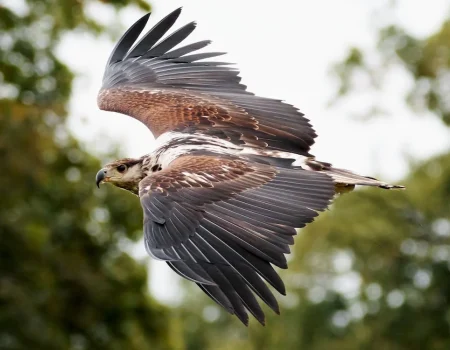Glacial Salmon, also known as Glacier Salmon, is a fascinating species of salmon that lives in icy, pristine waters. It gets its name from its unique habitat—glacial-fed rivers and lakes found in Arctic and subarctic regions around the world.
These majestic creatures have adapted to survive in the cold, crystal-clear waters, making them quite extraordinary.
Meanwhile, many farmers are not sure of where to farm Glacial Salmon due to their extraordinary characteristics. Well, we’ve done in-depth research and have come up with several best places to farm Glacial Salmon. Read on to know more.
By the year 2100, glacier retreat is projected to create approximately 6,146 kilometers of new streams accessible for colonization by Pacific salmon in western North America. This increase represents a significant potential for salmon habitat expansion, particularly in regions where glaciers are still present, like Alaska and British Columbia.
Where to Farm Glacial Salmon
When it comes to farming Glacial Salmon, some of the best locations can be found in the picturesque Arctic and subarctic regions as well as Glacial-fed Rivers and Lakes. Let’s see some of them;
Arctic and Subarctic Regions
1. Alaska, United States
Alaska, the land of rugged beauty, is home to some exceptional Glacial Salmon farms. With its vast stretches of untamed wilderness and glacier-fed rivers, Alaska provides an ideal environment for cultivating these magnificent fish.
The pristine waters and cool temperatures create the perfect conditions for Glacial Salmon to thrive and develop their unique flavors.
2. British Columbia, Canada
Head north to British Columbia, Canada, and you’ll discover another hotspot for Glacial Salmon farming. Along the wild coastline and within the network of fjords and inlets, glacial-fed rivers flow, nourishing the thriving salmon farms.
The combination of chilly waters and breathtaking scenery makes British Columbia an optimal location for cultivating these prized fish.
3. Norway
In the far reaches of Northern Europe, Norway stands as a prominent destination for Glacial Salmon farming. With its fjords, icy rivers, and vast coastline, Norway offers an abundance of glacial-fed waterways that provide the perfect environment for raising these remarkable fish.
The Norwegian Glacial Salmon farms benefit from the country’s expertise in sustainable aquaculture practices, ensuring the highest quality produce.
Out of the newly created streams, about 1,930 kilometers are expected to be suitable for spawning and juvenile rearing. This represents a potential gain of 0 to 27% within various sub-regions studied, indicating that while some areas will benefit significantly from glacier retreat, others may see negligible improvements in habitat quality.
Glacial-fed Rivers and Lakes
Here are some fascinating locations where Glacial Salmon farming thrives—(glacial-fed rivers and lakes) in different parts of the world!
4. Patagonia, Chile
Nestled in the breathtaking landscapes of Patagonia, Chile, you’ll find glacial-fed rivers that serve as prime locations for Glacial Salmon farming. The pure, cold waters flowing from the Andes Mountains create an idyllic environment for these fish.
Patagonia’s commitment to sustainable aquaculture practices ensures that the farming operations here maintain a harmonious balance with the pristine ecosystem.
5. New Zealand
Aotearoa, also known as New Zealand, offers a unique combination of stunning natural beauty and glacial-fed rivers that provide excellent habitat for Glacial Salmon farming.
With its crystal-clear waters and unspoiled landscapes, New Zealand has become a sought-after destination for those passionate about sustainable aquaculture and the cultivation of high-quality Glacial Salmon.
6. Iceland
Iceland is the land of fire and ice. Here, glacial-fed rivers and lakes weave their way through volcanic terrain, creating a remarkable setting for Glacial Salmon farming. The cold, mineral-rich waters of Iceland contribute to the exceptional flavor and texture of the salmon produced here.
The commitment to sustainable farming practices aligns with Iceland’s deep respect for its pristine environment.
7. Kamchatka Peninsula, Russia
Situated in the far eastern corner of Russia, the Kamchatka Peninsula boasts a rugged and pristine environment that is perfect for Glacial Salmon farming. The region is renowned for its abundant rivers, including the Kamchatka River, which is fed by glaciers.
The cold, nutrient-rich waters of this region contribute to the exceptional quality and flavor of the Glacial Salmon produced here.
8. Southern Alps, New Zealand
While we mentioned New Zealand earlier, it’s worth highlighting another region within the country that is ideal for Glacial Salmon farming—the Southern Alps. This majestic mountain range runs through the South Island of New Zealand and is home to numerous glacial-fed rivers.
The remote and untouched nature of the Southern Alps creates an ideal habitat for Glacial Salmon, resulting in fish with exceptional taste and texture.
Factors to Consider for Successful Glacial Salmon Farming
When it comes to successful Glacial Salmon farming, maintaining optimal water quality and temperature is crucial. Glacial Salmon are accustomed to living in pristine, icy waters, so replicating these conditions is essential for their well-being. Here are three main factors to consider for a successful Glacial Salmon farming;
1. Water Quality and Temperature Requirements
Glacial Salmon thrive in clean, oxygen-rich environments. That means the water should be free from pollutants, contaminants, and excessive organic matter. Regular water testing and monitoring help ensure that the water meets the highest quality standards, providing a healthy and thriving habitat for the fish.
Glacial Salmon prefer cold waters, typically ranging between 4°C to 15°C (39°F to 59°F). Maintaining a stable temperature within this range is essential for their growth and development.
Cooling systems, such as recirculating aquaculture systems (RAS), can be employed to regulate the water temperature and mimic the conditions of their natural habitat.
Despite the creation of new habitats, climate change poses ongoing challenges for salmon populations. Increasing summer stream temperatures and decreasing low flows threaten many existing habitats, which could counterbalance the benefits gained from new stream formations resulting from glacier retreat.
The global salmon market, which is predominantly driven by farmed salmon, is projected to grow from $50 billion in 2020 to $76 billion by 2028. This growth reflects a significant increase in demand for salmon, which is expected to supply nearly two-thirds of the fish consumed globally by 2030. Notably, 80% of the global salmon market consists of farmed fish, indicating the industry’s substantial role in meeting seafood consumption needs as wild fish populations face pressures from overfishing and environmental changes.
2. Availability of Glacial Water Sources
Glacial Salmon farming relies on the availability of glacial water sources. These sources are typically rivers, lakes, or reservoirs that are fed by glaciers or have glacial runoff. The purity and mineral content of glacial water contributes to the unique characteristics of Glacial Salmon.
When considering Glacial Salmon farming, it’s important to assess the proximity and accessibility of suitable glacial water sources. Farms located in close proximity to glacial-fed rivers or lakes have a distinct advantage, as they can directly utilize the pristine water for their operations.
However, even if a farm is not located near a glacial water source, alternatives such as recirculating systems or sourcing glacial water through pipelines may be explored to ensure the desired water quality for the fish.
3. Environmental Sustainability and Impact
A key factor in successful Glacial Salmon farming is prioritizing environmental sustainability and minimizing the industry’s ecological impact. This involves implementing responsible farming practices to ensure the long-term health of both the fish and the surrounding ecosystem.
Sustainable farming practices include minimizing waste, proper feed management, and responsible use of antibiotics or chemicals, if necessary.
In addition, farms can invest in water treatment systems to reduce the impact of effluents and prevent contamination of natural water sources. Collaborations with environmental organizations and certifications promoting sustainable aquaculture practices can also help farms maintain high standards and contribute to the overall well-being of the environment.
Methods of Glacial Salmon Farming
1. Open-Net Pen Farming
One common technique for Glacial Salmon farming is open-net pen farming. Imagine large netted enclosures placed in glacial-fed rivers or coastal areas. These pens provide a controlled environment for the salmon to grow and thrive, while still allowing for water exchange with the surrounding environment.
Open-net pen farming takes advantage of the natural currents and flow of the glacial water. The pens allow the fish to move and swim freely while being protected from predators. This method is often employed in areas where the water quality is excellent, and the glacial flow provides a constant supply of oxygen and nutrients for the salmon.
2. Land-Based Recirculating Aquaculture Systems (RAS)
Another innovative approach to Glacial Salmon farming is the use of land-based recirculating aquaculture systems (RAS). In this method, the salmon are raised in closed, controlled environments on land, separate from natural water sources. RAS utilizes advanced filtration and water treatment technologies to maintain optimal water quality.
In a land-based RAS, water is continuously circulated and filtered, ensuring a constant supply of clean and oxygenated water for the fish. This approach offers precise control over water temperature, quality, and environmental conditions, minimizing the risk of disease outbreaks and optimizing growth rates.
Land-based RAS also allows for year-round farming regardless of seasonal variations, providing a stable and reliable supply of Glacial Salmon.
3. Glacial Water Recirculation Systems
Glacial water recirculation systems are specifically designed to make the most efficient use of glacial water in farming operations. These systems capture and recirculate the glacial water, ensuring minimal wastage and reducing the environmental impact.
In a glacial water recirculation system, water from glacial-fed rivers or lakes is collected and treated to maintain water quality standards. It is then circulated through the fish tanks or pens, providing the fish with the necessary habitat conditions.
The system includes filtration, oxygenation, and waste management components to maintain optimal water quality and minimize the discharge of effluents into natural water sources.
The use of glacial water recirculation systems helps conserve water resources while still harnessing the unique properties and benefits of glacial water for the growth and development of Glacial Salmon.
Frequently Asked Questions
Where Can I Farm Sunscale Salmon?
Where are the Glacial Salmon Schools?
Where is the Best Place to Farm salmon in New World?
How Long does it Take for Salmon to Grow?
Can Glacial Salmon be Farmed Organically?
What is the Best Location to Farm Salmon?
Conclusion
Glacial Salmon farming offers a unique and exciting opportunity to cultivate these remarkable fish in pristine glacial environments. We have explored eight different places to farm glacial salmon as well as why those places are the best.
Are you a farmer still thinking about where to farm glacial salmon? I hope you find this article helpful!
References
Study Finds Melting Glaciers Could Produce Thousands of Kilometers New Pacific Salmon Habitat
Glacier retreat creating new Pacific salmon habitat in western North America
Glacier retreat creating new Pacific salmon habitat in western North America
Glacier Retreat and Salmon | University of Alaska Southeast
Glacier Retreat and Pacific Salmon
Disclaimer
This content on Bagrica is for informational purposes only. Consult a professional for pet care or farming advice. Bagrica is not liable for any actions taken based on this information.







No Comment! Be the first one.